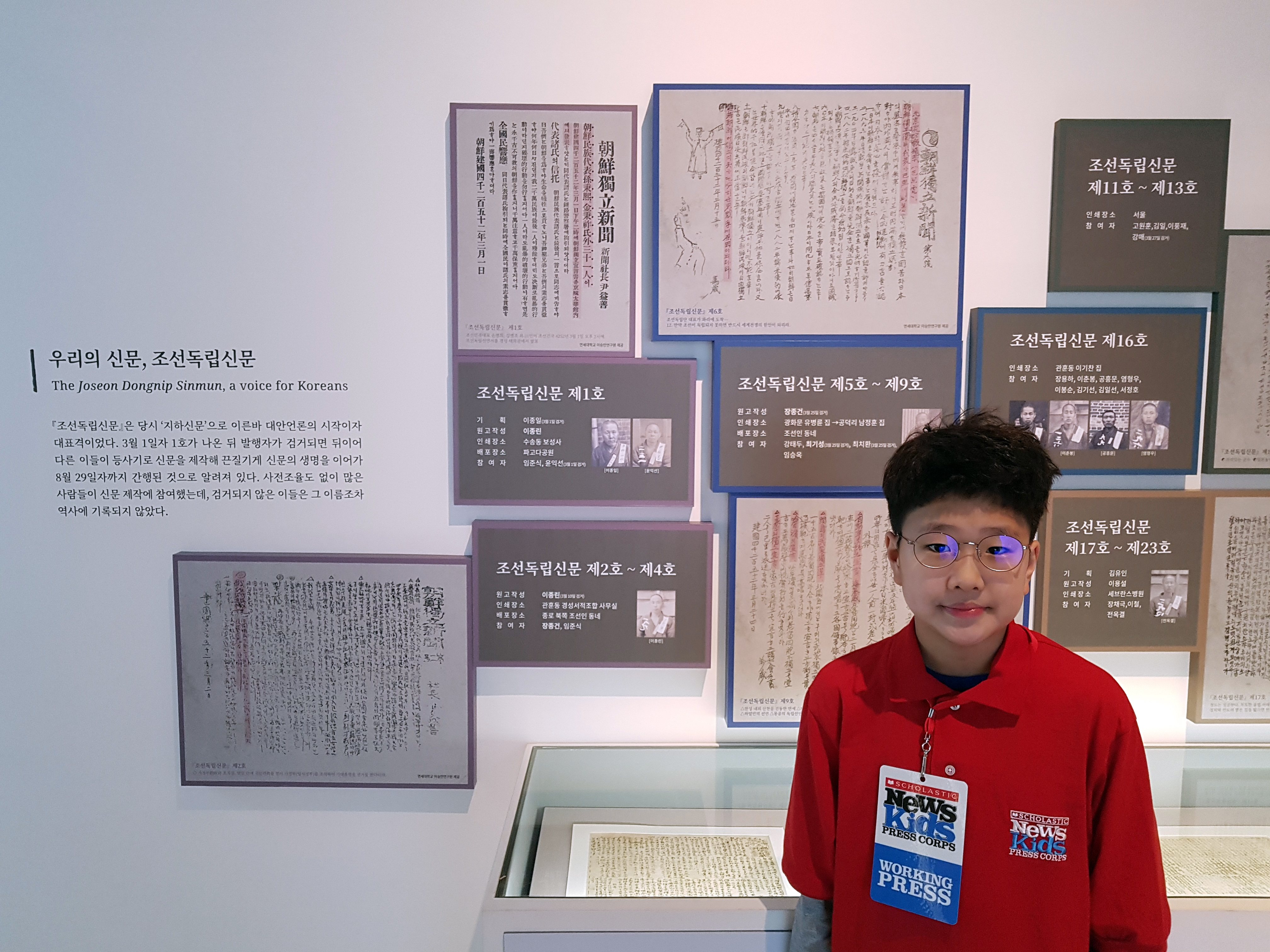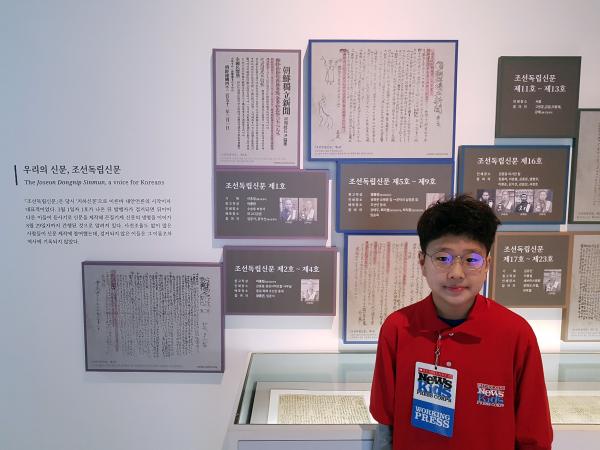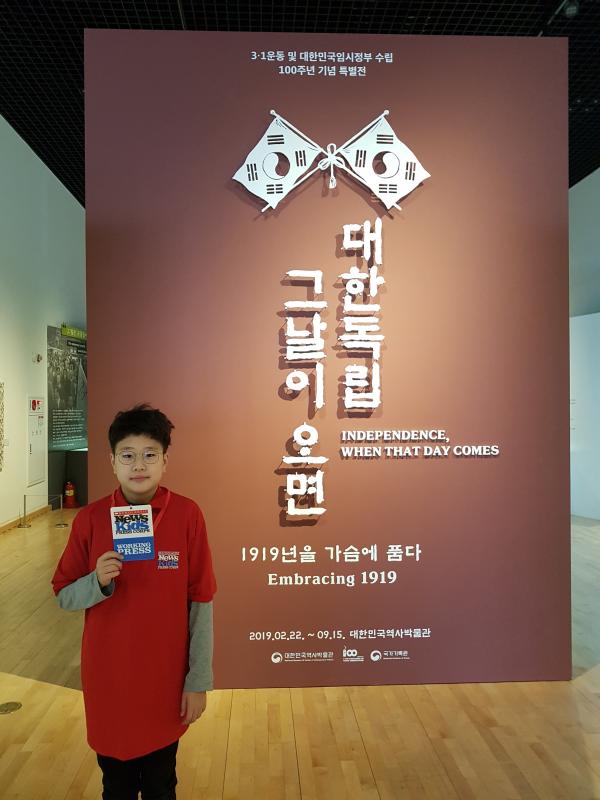KID REPORTERS’ NOTEBOOK
Korea Celebrates the March First Movement


The documents behind John detail Korea’s 1919 fight for independence from Japan.
On March 1, 1919, a 16-year-old student named Yu Gwan-sun ignited a protest movement in Korea. Yu and her classmates demanded independence from Japan, which had brutally annexed Korea in 1910.
Yu was beaten and jailed for her actions. She died from her injuries. But her bravery inspired thousands of others across the Korean Peninsula to rise up and demand independence. The protests led to the establishment of a provisional government later that year.
In 1945, Korea finally won independence from Japan. The southern half of the peninsula became the country of South Korea, officially known as the Republic of Korea.

A manuscript of the first Korean dictionary, the Malmoi, is on display at the National Hangeul Museum in Seoul.
SPECIAL EXHIBITIONS IN SEOUL
The March First Movement is still celebrated each year. It’s a time to remember the ordinary people—students, farmers, teachers, and factory workers—who stood up against Japanese occupation. This year marks the 100th anniversary of that movement.
I recently toured two special exhibitions that showcase the fight for independence. At the National Hangeul Museum in Seoul, the capital of South Korea, visitors can see the Malmoi manuscript, the first Korean dictionary. It represents the risks that people took to protect the Korean language for future generations.
“After seeing this, I should be grateful that we’re able to use our own language,” said Willie Hong, a student. “We must keep our language and never lose it again.”

John at the National Museum of Korean Contemporary History, where a special exhibition spotlights the March First Movement of 1919
“BRAVE AND DETERMINED”
At the National Museum of Korean Contemporary History, an exhibition called “Independence, When That Day Comes” celebrates the protest movement that stunned the world. Photographs, speeches, and manifestos from 1919 demonstrate a revolutionary spirit that was unusual for the people of Korea.
“I never knew that Korea fought so hard for its independence,” said Stephanie Park, a tourist from Australia.
Visitors can learn about the history of Korea, how our ancestors sacrificed for future generations, and the hardships they had to undergo. Their perseverance helped South Korea become an independent nation.
“I think the people were immensely brave and determined in their fight for their independence,” Park said.
Kunwoo Na, my 11-year-old classmate, agreed. “As a Korean, I feel proud of my ancestors,” he said. “Now I’m motivated to study more about our history.”
Another classmate, Seojin Han, 11, added: “There’s no future for a country that has forgotten its past.”
